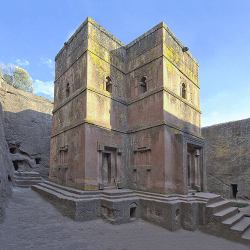UNESCO World Heritage Sites in Germany are:
- Aachen Cathedral
- Speyer Cathedral
- Würzburg Residence with the Court Gardens and Residence Square
- Pilgrimage Church of Wies
- Castles of Augustusburg and Falkenlust at Brühl
- St Mary’s Cathedral and St Michael’s Church at Hildesheim
- Roman Monuments, Cathedral of St Peter and Church of Our Lady in Trier
- Frontiers of the Roman Empire
- Hanseatic City of Lübeck
- Palaces and Parks of Potsdam and Berlin
- Abbey and Altenmünster of Lorsch
- Mines of Rammelsberg, Historic Town of Goslar and Upper Harz Water Management System
- Maulbronn Monastery Complex
- Town of Bamberg
- Collegiate Church, Castle and Old Town of Quedlinburg
- Völklingen Ironworks
- Messel Pit Fossil Site
- Bauhaus and its Sites in Weimar, Dessau and Bernau
- Cologne Cathedral
- Luther Memorials in Eisleben and Wittenberg
- Classical Weimar
- Museumsinsel (Museum Island), Berlin
- Wartburg Castle
- Garden Kingdom of Dessau-Wörlitz
- Monastic Island of Reichenau
- Zollverein Coal Mine Industrial Complex in Essen
- Historic Centres of Stralsund and Wismar
- Upper Middle Rhine Valley
- Dresden Elbe Valley Delisted 2009
- Muskauer Park / Park Mużakowski
- Town Hall and Roland on the Marketplace of Bremen
- Old town of Regensburg with Stadtamhof
- Ancient and Primeval Beech Forests of the Carpathians and Other Regions of Europe
- Berlin Modernism Housing Estates
- Wadden Sea
- Fagus Factory in Alfeld
- Prehistoric Pile Dwellings around the Alps
- Margravial Opera House Bayreuth
- Bergpark Wilhelmshöhe
- Carolingian Westwork and Civitas Corvey
- Speicherstadt and Kontorhaus District with Chilehaus
- The Architectural Work of Le Corbusier, an Outstanding Contribution to the Modern Movement
- Caves and Ice Age Art in the Swabian Jura
- Archaeological Border complex of Hedeby and the Danevirke
- Naumburg Cathedral
- Erzgebirge/Krušnohoří Mining Region
- Water Management System of Augsburg
- Frontiers of the Roman Empire – The Danube Limes (Western Segment)
- Frontiers of the Roman Empire – The Lower German Limes
- Mathildenhöhe Darmstadt
- ShUM Sites of Speyer, Worms and Mainz
- The Great Spa Towns of Europe
- Jewish-Medieval Heritage of Erfurt
> View other UNESCO World Heritage Sites
More on World Heritage Sites
UNESCO (United Nations Educational, Scientific and Cultural Organization) World Heritage Sites comprise 1,199 properties.

World heritage property is a legacy from the past, that people live with today, and pass on to future generations.

The cultural and natural heritage are both irreplaceable sources of knowledge and inspiration.





UNESCO seeks to encourage the identification, protection and preservation of cultural and natural heritage around the world that are considered to be of outstanding value to humanity. This is embodied in an international treaty known as the Convention concerning the Protection of the World Cultural and Natural Heritage, adopted by UNESCO in 1972.
A World Heritage Site is an area or landmark designated by UNESCO for having cultural, historical, scientific or other forms of significance. The sites have legal protection by an international convention.
A World Heritage Site is nominated by their host country and determined by the international committee to be a unique landmark which is geographically and historically identifiable and having a special cultural or physical significance. World Heritage Sites are usually ones with ancient features, historical structures, buildings, cities, deserts, forests, islands, lakes, monuments or mountains.
The site may signify a remarkable accomplishment of people and serve as evidence of intellectual history or a place of unparralled natural beauty.
The sites are intended for practical conservation for posterity, which otherwise would be subject to risk from human or animal trespassing, unmonitored, uncontrolled or unrestricted access, or threat from local administrative negligence. Sites are demarcated by UNESCO as protected zones.
The programme catalogues, names, and conserves sites of outstanding cultural or natural importance.
The work began with the Convention Concerning the Protection of the World’s Cultural and Natural Heritage. The convention was adopted by the General Conference of UNESCO on 16 November 1972. Since then, 195 states have ratified the convention, making it one of the most widely recognised international agreements and a popular cultural programme.











